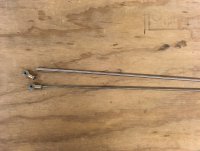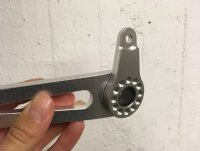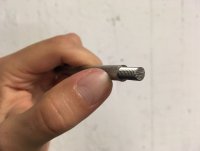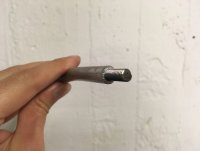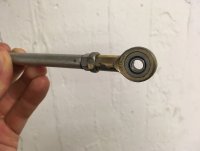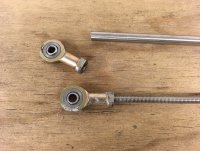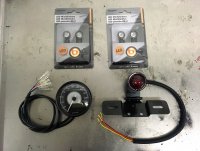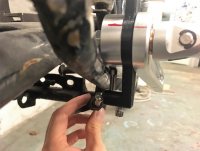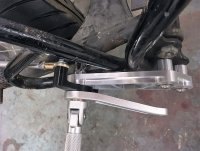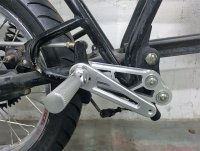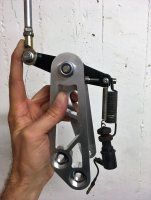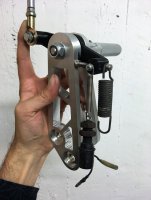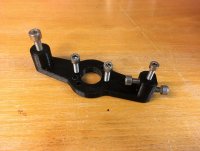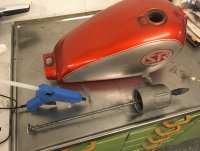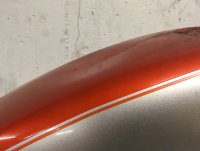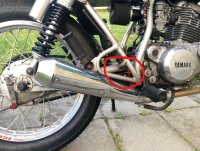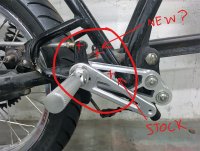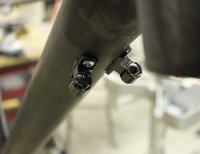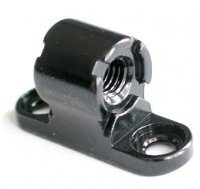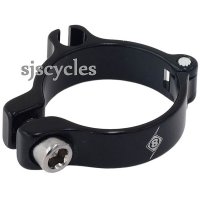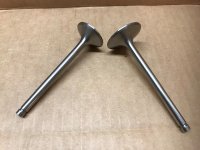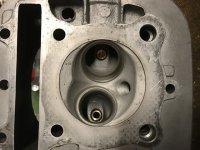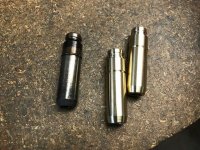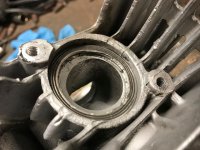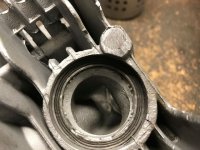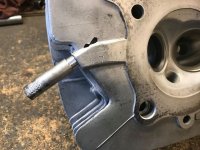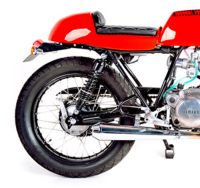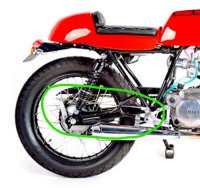Having plowed a fair bit of this ground myself, I have a couple of observations. There is a lot to be said for a linkage system, but there is a requirement that is often so difficult to meet that a cable starts looking very appealing. The issue is a result of the suspension motion. In order for the action of the pull rod to be constant while the suspension moves, the pivot point where the crank arm connects to the pull (or push) rod must be coincident with the swing arm pivot. Any other location introduces undesirable motion into the braking system as the suspension moves. Obviously this is impossible to achieve, as the pivot is not stationary, and can only be ideal at one brake pedal location. Fortunately, the problem is a matter of degree, so as long as the problem is small enough so as to be (mostly) unnoticeable, it is not a problem. Unfortunately, there is a quite limited range of locations for this pivot where this problem is, well, not a problem. The stock location is pretty much the only good place. On virtually all bikes, you will find this location as close to the swing arm pivot as practical, and very close to or on, a line drawn between the swing arm pivot and the rear axle. Even very small deviations from this location will create obvious problems with the brake actuation as the suspension moves, though the seriousness of the problem often depends on who you ask. Moving this pivot point fore and aft along the center to center line is fairly benign. Moving it up or down off of this line is not. Your location is high enough to be very noticeable to your foot if you apply the brake and have substantial suspension motion at the same time. Opinions vary. On a street bike it might only be an annoyance, but it would be intolerable on a road race bike. The farther away from the center to center line, the worse this will be, and if far enough away combined with sufficient suspension travel, it is even possible to lock the brake even with zero pedal on a hard enough bump.
You can see how this works by taking off your shocks and while observing your brake pedal, moving your suspension up and down. You will have to first adjust your brake to be off of its return stop to see the motion. In operation, with the brake applied, you will feel the mechanism "pumping" as you travel over bumps. This phenomenon is present in ALL similar mechanisms, even stock configurations, but it is small enough that it is unimportant.
From the pics, it looks like you can lower this pivot to fall along the center to center line, in which case the issue will become insignificant. When I put a bike together, I determine where the pegs need to be and that is where they stay. If you are committed to the current peg location, keep in mind that the brake pedal axle need not be part of the peg. And if you have not already given consideration, the lever ratios are very important. It is very useful to measure the stock brake pedal length, along with the length of the lever that connects to the pull rod. You will need to keep this ratio, as well as the ratio between the lengths of arms at both ends of the pull rod in your new system if you want similar power required at the pedal for operating the brake. Just because this system is very simple, it does not mean there is not a lot to figure out if you want it to function well, and the fact that all stock systems are so very identical is worth considering. There is in fact very little deviation possible without real consequences, which is why cable or hydraulic systems are often the "go to" solution despite their increased complexity and expense.


